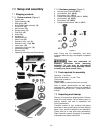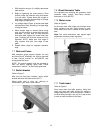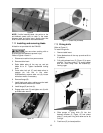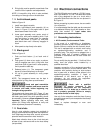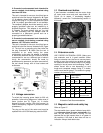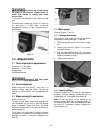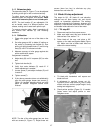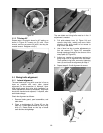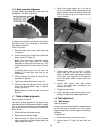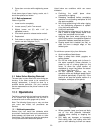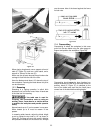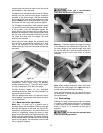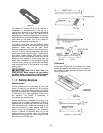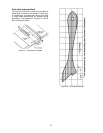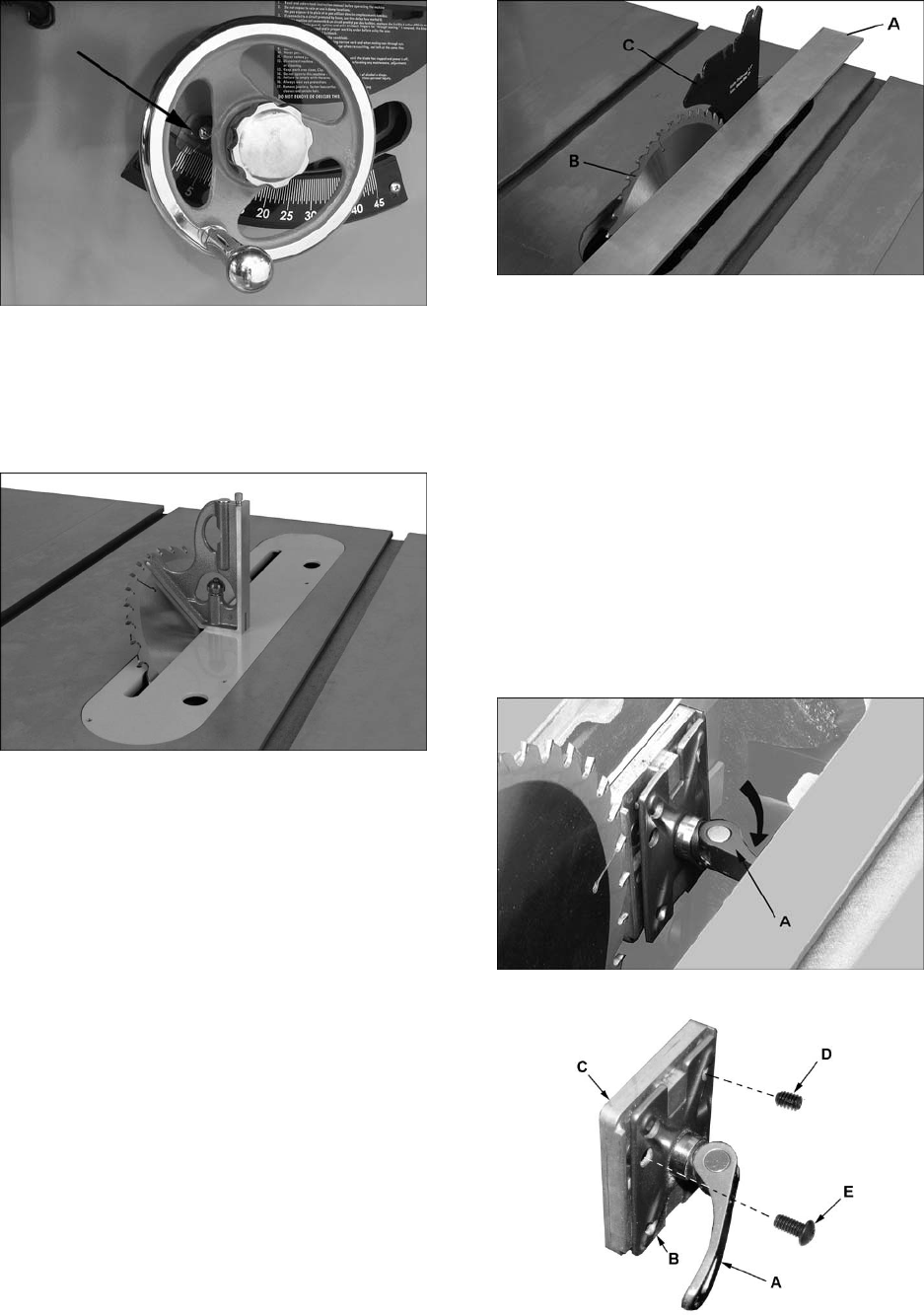
18
Figure 21
9.5.2 Tilt stop 45°
Repeat steps 1 through 4 above for 45° setting, as
shown in Figure 22. Loosen nut (B
1
) with 11mm
wrench, and turn set screw (B
2
) with a hex key the
needed amount. Retighten nut (B
1
).
Figure 22
9.6 Riving knife alignment
9.6.1 Lateral alignment
The saw blade and riving knife must be in line as
close as possible with each other (lateral
alignment) for the prevention of kickback. Upon
initial blade guard and riving knife installation no
further adjustment should be necessary. Alignment
should be checked and adjusted, if required, after
each blade change.
Check the alignment as follows:
1. Remove blade guard, pawl assemblies, and
table insert.
2. Place a straightedge (A, Figure 23) on the
table so it rests against blade (B) and riving
knife (C). Rotate blade so that top of blade
tooth touches straightedge.
Figure 23
The saw blade and riving knife must be in line. If
adjustment is needed:
3. Pull quick-release lever (A, Figure 24) and
remove riving knife, making note as to which
direction riving knife needs to be moved to
align it with saw blade.
4. Use a 3mm hex key to make adjustments to
four set screws (D, Figure 25) accessible
through openings located in the corners of the
clamp plate (B, Figure 25).
5. Adjust any number of setscrews required to
bring riving knife in alignment with saw blade.
Then reinsert riving knife, secure by tightening
lever (A) and check the alignment per step 2.
6. Repeat steps 3–5 until alignment is correct.
Figure 24
Figure 25



